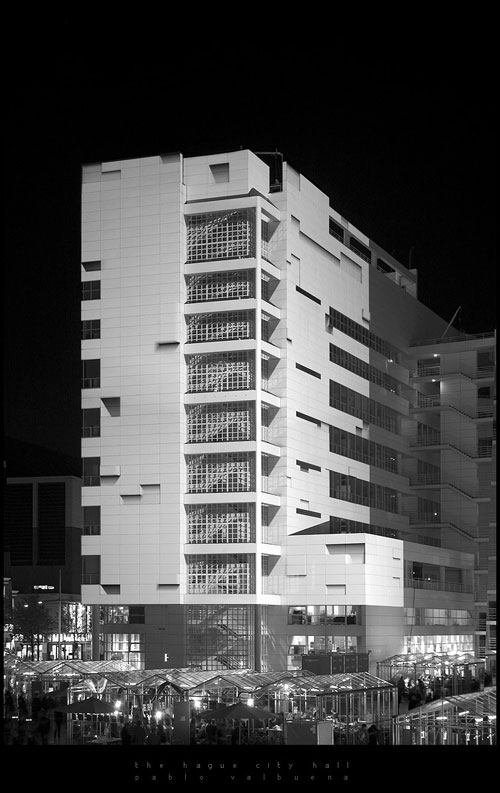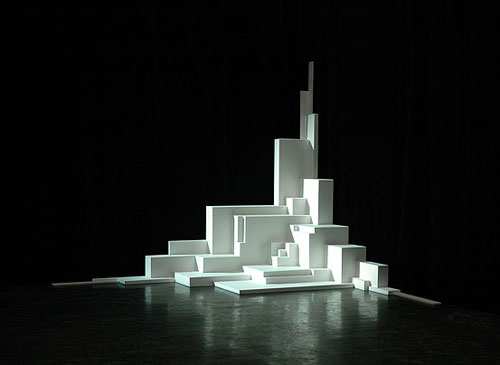
Grinding’s recently published a post about Pablo Valbuena‘s new augmented sculpture at the TodaysArt festival in Hague. Valbuena’s an amazing guy – the post just made me remember that last year at the Ars Electronica festival I not only youtubed his amazing installation entitled Augmented Sculpture 1.2 but also interviewed him. At the moment I cannot find the original English sound recording, I only have the Hungarian translation that I did for HVG Online (read the Hungarian version here, together with the complete article that we did for the online version, we wrote a different one for the weekly print) so here’s a brief resumé.

What Valbuena says in the interview about his augmented sculptures is that he first showcased it in the Madrid media lab – the first prototypes were really small. The experience and the impact grows with the size, thus reflecting on architecture.
Back in Linz (see the video right above) he only used one projector. If you use only one, he says, you can only cover certain angles, so it’s reasonable to put the cubic objects in the corner. If he put his installation into the middle of the room, all free to walk around, he would have needed more projectors to cover all angles and that would require lots of previous experimentations on how light sources overlap. This installation is only about physical geometry, virtual geometry and how these overlap. When the lights are stronger, the audience understands more about the geometry; when it’s darker, you can see much better how surfaces reflect the light and you are aware of the smaller changes.
Valbuena says that his installation consists of virtual and physical parts, wherein the physical connects more to traditional architecture. He studied architecture and also drew a lot so he’s more interested in construction and the mixture of hard and soft surfaces. He only wants to complement the physical layer with a content layer, especially one with dynamics and sound. He’d love to make an interaction between people and the public space, he says (thus actually taking us towards what’s on the Hague videos), because people are getting more and more mistaken about what interaction really is – when you walk into a building and sense the space around you, that’s an interaction in itself, a stronger and more direct stimulus than pushing buttons. He is influenced by the works of Zaha Hadid and also Lebbeus Woods.
On using sounds, he says he listened to Spanish netlabels, such as Miga and worked with open-source software to achieve something that’s very close to linear composing. He also mentions working with layers that he turned into sound and then backasswards, how to make visual geometry out of sound effects.
He experimented a lot with everyday objects, such as cars, chairs, washing machines, enjoying the fact that the new visions always bring up subconscious meanings. Using people and making an augmented fashion show could be amazing, he adds.
UPDATE 1: Here’s a neat video of the Hague event directly from Pablo’s site.